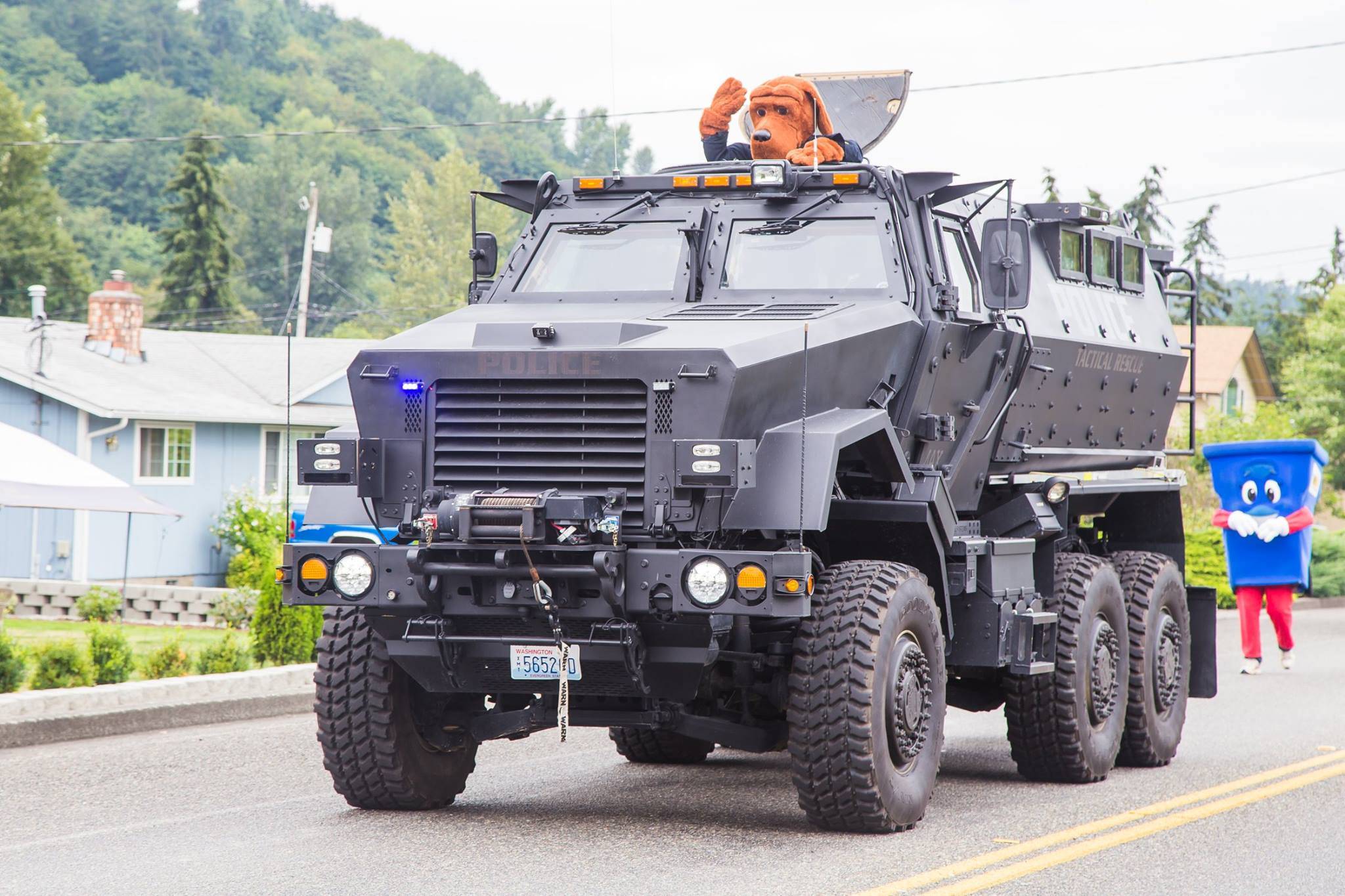Included in a slate of police reform bills this session in Olympia was one that ordered police departments to get rid of surplus military weaponry. This initially included armored vehicles, like the one the Snoqualmie Police Department owns, but ultimately police were allowed to keep such vehicles.
The bill, HB 1054, mandates that police must return or destroy surplus military weapons or armed vehicles they received. Police departments across the country have for decades been able to request military gear as part of the federal 1033 program, administered by the Law Enforcement Support Office. These pieces of equipment range from radios to rifles and armored vehicles.
The Snoqualmie Police Department in 2014 requested a BAE Caiman tactical vehicle, a mine-resistant ambush protected armored vehicle. These vehicles were used heavily in the Iraq and Afghanistan wars. Following nationwide protests over the murder of George Floyd last year by Minneapolis police officer Derek Chauvin, a wave of renewed scrutiny focusing on police tactics spread across the U.S.
This included Washington state, which passed a number of laws seeking to change the way policing is done in the state. HB 1054 originally included a provision that would ban law enforcement agencies from owning or acquiring armored vehicles, but this was ultimately removed from the bill.
“Prohibiting the use of armored vehicles regardless of former function is objectionable because it places officers in unnecessary danger,” a portion of the bill reads. “These vehicles are used to protect officers and citizens in active-shooter incidents and rescue situations.”
These are the kinds of uses that Capt. Nick Almquist, with the Snoqualmie Police Department, said their vehicle is used for. In previous coverage from June 2020, the department stated it had only deployed the armored vehicle a handful of times as part of a regional SWAT team, and in rescue operations. Most of the time, it sits in a police parking lot and is occasionally used for training.
“The retention of our armored vehicle is going to be one that is good for the Valley for when we do need these types of critical incident responses,” Almquist said of HB 1054.
The police department does however have six Vietnam-era M14 rifles that are fully automatic and need to be returned, likely to Joint Base Lewis-McChord. These rifles were acquired by the department more than 20 years ago and have never been used.
Washington state Rep. Bill Ramos worked on HB 1054, and said the final bill was a compromise between varying stakeholders, including law enforcement representatives and community organizations. While simple armored vehicles will be allowed to remain in police departments, anything that is equipped with weapons — like armed helicopters, or vehicles — must be returned.
“There were a lot of conversations on all of these things,” Ramos said.
For his part, Ramos said he hopes that the bill also serves to discourage police agencies from deploying armed vehicles during protests. While the bill doesn’t prohibit their use during protests, he said the general understanding is that they shouldn’t be.
“You shouldn’t see these on the streets in general,” Ramos said.
During a large protest against police violence in North Bend last summer, Snoqualmie Police Department — which provides police services for the city — activated the armored vehicle, but left it sitting in a parking lot blocks away from the protest, Almquist said.
Snoqualmie is the only agency in King County that currently has an armored vehicle provided through the federal program. Although it is shared between several cities that make up the regional Coalition of Small Police Agencies, which operates its own SWAT team.
The coalition is comprised of 14 King County cities including Snoqualmie, Issaquah, Mercer Island, Normandy Park, Hunts Point, Yarrow Point and Black Diamond. The Caiman’s cost, training and use is spread between all the cities in the coalition.


